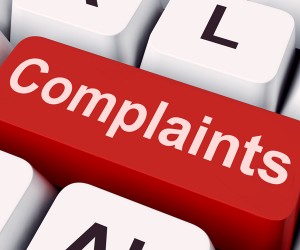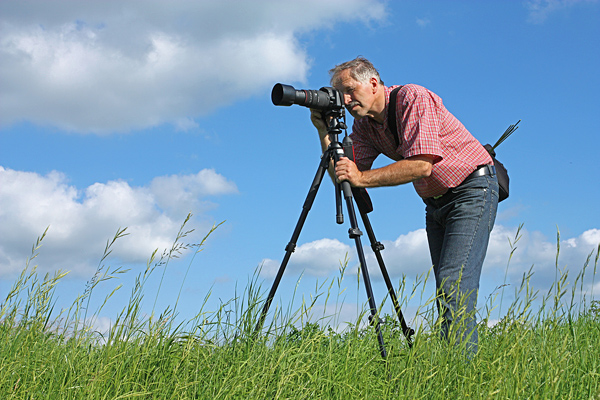Finding It on Google Does Not Mean It Is Yours to Use
July 23rd, 2014
It’s late at night, a tired driver pulls up in front of your house, walks in your unlocked front door, and proceeds to enjoy a sound night of sleep in your spare bedroom. How would you react? Confronting the stranger, he tells you that an unlocked door is an open invitation to guests. Another night, your door is locked, and another stranger climbs in through a window. This one brings his entire family, redecorates, changes the locks on the doors, and wants to know what you are doing in his house.
You might think that these stories are crazy, and you would be right; however, have you ever done an image search on Google when you were looking for a certain photo or illustration to use in your own promotional materials? Unless it is specifically marked as “freeware” or “open source” by the original artist, you are probably just as guilty as one of those uninvited guests.
Most people know that just about any image or text that is ever posted online will be shared, re-posted, and indexed by search engines. Even embarrassing personal information has a life of its own. In fact, it took a May 2014 ruling by the European Union’s top court to enforce the new “Right to Be Forgotten” policy that affects Google search results that are based upon an individual’s name. In the first month, according to The Wall Street Journal, over 40,000 removal requests were filed; however, the removal process is a slow and tedious procedure that is currently in effect only in EU member countries.
When it comes to that image search on Google, when you click on an individual image, the only disclaimer is the “images may be subject to copyright”, wording that is intended to relieve Google of liability, not to protect either you or the rights of artists. It is safe to assume that any use of an image found in this manner is a copyright violation and inherently illegal.
Put yourself in the shoes of an artist – or an author, in the case of text – and try to see the situation objectively. Nobody has a right to stay at your campground without paying a fee. Your campground is your livelihood. Well, the same thing applies to artists, illustrators, authors, and other people engaged in creative pursuits. They earn a living, put food on the table, and clothe their children by selling rights to their work.
One of our clients was mildly chastised recently for using a piece of artwork that he found in a Google search on one of his Facebook posts. Google did not clearly warn him that the artwork was copyrighted, but the artist did. It was a simple matter of apologizing and deleting the image; however, if the image had been used on printed materials, it could be another story with an entirely different outcome. Fortunately, most artwork found online is low resolution and unsuitable for use in print. Using artwork found online in printed materials could actually lead to a cease and desist order that could require any materials containing an unauthorized image to be recalled and destroyed.

Another of our clients, Baker’s Acres Campground in New Jersey, has a very distinctive raccoon logo that we hired an artist to design on their behalf back in the 1980s. It is the campground’s registered trademark, they paid to have it created, and the original artwork is in our files. I just discovered that another campground has been using this artwork as its own logo, simply adding a feather to the back of the raccoon’s head. I spoke with the owner of the campground, and he sounded like a very nice individual who had no ill intent. He simply thought that he had used a piece of art that was in the public domain and then modified it. It apparently appears online and on his brochure, although I advised him to stop using it. Other instances may not result in such a friendly outcome.
If you require artwork for any purpose, there are two options. Either hire an artist to create custom artwork or buy usage rights to royalty-free stock images. Artists or illustrators can be easily found online through various resources such as www.elance.com; stock photography and illustrations are also readily available online through various resources such as www.shutterstock.com and www.123rf.com. Prices are remarkably affordable, and it is difficult to put a price on peace of mind.
The bottom line is that a Google search for images might be fine to provide ideas regarding what is already being used, perhaps helping you to avoid using something that is too similar to existing art; however, it should not be used as a resource for finding unique images that are free for the taking. In other instances, the search results might include watermarked stock images, with a link to the site where usage rights may be purchased.
Think about it: the reason that Google is indexing an image is because it is already online and being used, almost certainly by a business that has paid for that privilege. You do not want to act like that uninvited guest who is looking for a free place to spend the night.
This post was written by Peter Pelland
Tags: 123rf, copyright violations, Elance, freelancers, Google image search, Google images, open source, photography rights, Right to Be Forgotten, royalty-free, Shutterstock, stock photography, trademark violations
Posted in Business Ethics, Google Resources |
The Fine Art of Handling Negative Reviews
July 16th, 2014
Not all reviews are negative. The negative reviews are simply the ones that most deserve your attention. Some negative reviews are worse than others, but the worst negative review is the one that was left unanswered.
In most instances, I find that small business owners cannot be objective when handling criticisms of the businesses which are often extensions of themselves. That is understandable, but it is important to put subjectivity aside and recognize that, in the vast majority of instances, a negative review is providing valuable input regarding improvements that you should consider making.

In other instances, a negative review might provide insight into a situation that requires urgent action; however, if you are unaware of the review, the situation is likely to continue and the viral power of the online review will only multiply. Let me share an example.
I recently did a search of Google for the name of a business, hoping to find its correct mailing address. At the absolute top of the search results (#1 on page #1) was the following review that has been online since January of 2012. I have changed the names and any other identifying information, but the point is clear.
“While driving on Eastern Avenue (near Spring Street) today (01-11-12) at 2:05 PM I was tailgated by someone driving a truck (license plate RVJ-524) from Acme Enterprises. I was forced to pull over because the driver was driving too close. When I pulled over I was given the finger and when I continued driving the driver doubled-back to actually chase me! I’m a member of the [a local business association] and I will certainly be sending an email blast to my fellow members to ensure they avoid this organization. I took a picture of the driver and have it on file.”
Wow! Can you imagine this being at the top of the search results for your business for 2½ years, and not knowing about it? Can you imagine having an employee acting in this manner while driving a clearly identified company vehicle? I presume that any business owner would take immediate corrective measures if he knew about this situation. Without any such knowledge, this type of behavior on the part of an employee is only likely to continue.
Yes, this is an extreme example, but it is totally true. How about the employee who is short with one of your guests, or the employee who did not perform a maintenance task up to the expected standards? Those are often the foundation of a negative review. Even if a review site does not give you, as the business owner, an opportunity to directly respond online, it is still providing you with valuable information that should probably be incorporated into your next company meeting, job description, or employee performance review. The reputation of your business is at stake.
When you do have the opportunity to respond to a negative review, here are a few suggestions:
- Listen to what the reviewer has to say. Try to be as subjective as possible, putting your ego aside. The review is not a personal attack upon your reputation (even if you think that it is.)
- Empathize, introduce a positive factor into the conversation, and apologize if necessary. An apology is not an admission of guilt but simply a polite acknowledgement that the reviewer had less than a perfect experience involving your business.
- Try to take the conversation offline. I recently posted on Facebook how dissatisfied I was when an energy audit contractor failed to show up for a scheduled appointment. The organization saw that it had been mentioned on Facebook, responding by asking me to contact them privately with my telephone number. Offline, they apologized and re-scheduled the appointment for the following day. Any damage was under control.
- Despite the urgency of responding quickly, before posting a response to an online review, always run it by another set of eyes. Too often, in the absence of body language and tone of voice, a response with the best of intentions might sound condescending or even sarcastic. Remember that you are trying to rectify a situation, not make it worse.
There are literally dozens of online review sites, the most important which impact the travel and tourism industry being TripAdvisor, Yelp, and Foursquare. Other types of businesses are reviewed on sites like Angie’s List, MerchantCircle, Manta, Buzzillions, Epinions, and Insider Pages. Then don’t forget the BBB (Better Business Bureau) Online, where any consumer can file a complaint against a business.
Just as important, any comment on Twitter, Facebook, or Google+ is a de-facto review within the writer’s network. In fact, those can often do the most harm because they come from somebody whose opinion is trusted within his or her network of friends.
There are also more than a dozen of which are specific to the campground industry. These include RV Park Reviews, CampRate, Campground Report, Campsite Reports, RVparking.com, RVcampReviews.com, RV Park Finder, and of course GuestRated. Some of these sites get much more traffic than others, but keep in mind that only one person reading one negative review can translate into lost business. Do your best to try to keep that from happening.
This post was written by Peter Pelland
Tags: Angie’s List, Buzzillions, Campground Report, CampRate, Campsite Reports, complaints, Epinions, Facebook, Google, GuestRated, Insider Pages, Manta, MerchantCircle, review sites, reviews, RV Park Finder, RV Park Reviews, RVcampReviews.com, RVparking.com, Twitter
Posted in Guerrilla Marketing, Marketing Strategies, Review Sites |
Your Prime Season Is the Time for Photography
July 9th, 2014
Until about 7 or 8 years ago, I spent my summer weekends executing on-location commercial photography assignments at campgrounds throughout the East Coast. It was not profitable work, but it gave my company a competitive edge when designing brochures and building websites. We knew that the photography was not going to be the weak link that would limit the effectiveness of the finished products.
After the weather, the greatest source of frustration when it came to scheduling photography was procrastination on the part of my clients. My main concern was sunny skies (which seem to be less and less common these days), but my clients’ main concern seemed to be making excuses for why the upcoming weekend was not the right time for photography.

The excuses ranged from being too busy and too crowded to not being busy enough. With the exception of three-day holiday weekends, photos generally needed to be taken on a Saturday, which eliminated 6 out of the 7 days of the week. Saturdays were the days that were packed with activities, and the occupancy levels insured a ready supply of impromptu models. The weather could be gorgeous on a Wednesday, but empty campsites, an empty playground, and an empty swimming pool do not present a high level of marketing appeal.
Basically, all bets had to be placed on Saturdays, when the weather needed to be somewhere between partly cloudy and sunny. It does not require a statistician to know that the pieces did not always magically fall together. I spent many Thursday nights wondering if the weather would be sending me to North to Maine, South to Maryland, or West to Ohio. Even then, everybody knows that weather forecasts are notorious for their lack of accuracy.
My point with all this is to encourage campground owners to take photos when the time is right. As I write, it is already approaching mid-July, with two major holiday weekends and the entire month of June (perhaps the single best time to take photos) already behind us. If you have not already taken photos, what are you waiting for? Are you waiting for your pool to be closed for the year, waiting for the kids to be back to school, or waiting for pumpkins and mums to enhance your landscaping?
As I mentioned, I stopped taking photography assignments years ago, although my company does its best to locate talented freelance photographers who have the necessary skills for on-location commercial assignments on behalf of our clients. Year after year, I have campground owners contacting me looking for a referral the week before Labor Day weekend. Guess what? They’re out of luck.
Here are a few tips:
- Hire a qualified and skilled commercial photographer. Get a referral, then view the photographer’s portfolio. Portfolios are all online these days. If the photographer shoots babies and weddings, look elsewhere.
- Expect to pay $800.00 to $1,200.00 for a day of commercial photography. Define the day, including the expected start and finish times. If more than 100 miles or so of travel is involved, expect to pay additional travel expenses. Look at the bright side: there are no longer any fees for film and processing!
- Expect your photographer to be using professional equipment (probably a digital SLR), including basic lighting (for interiors like your store and cabins) and a tripod. Professional photographers will always use a tripod.
- Expect the photographer (or an assistant) to take responsibility for model releases.
- The photographer should know how to “style” the shots, moving things around if necessary to improve the composition, but he cannot be expected to mow your lawn, pull weeds, rake your beach, replace burned out light bulbs, repair a torn volleyball net, or paint the side of a building. In other words, prepare in advance for your day of photography. If you were selling your house, would you show it to prospective buyers when the beds were unmade and there was a pile of dirty dishes in the sink? Do not expect everything to be “fixed” in Photoshop!
- Outline in advance how long it will take for you to receive the images taken the day of the shoot and how they will be delivered (most likely on discs). Also determine in advance what usage rights will be provided. Typically, the photographer will retain the actual ownership or copyright to his work, conveying full, royalty-free usage rights to the work that was produced on your behalf. That is a reasonable expectation, particularly these days when there is no original film involved.
- To get the job done right, the photographer you need is almost never going to be the person who you see in the mirror or somebody who addresses you as “Mom” or “Dad”.
With these tips in mind, put an end to the procrastination. Photography is almost always the weak link when my company is hired to assemble brochures, rack cards, directory ads, and other printed materials. Although websites demand lower resolution than print, the difference between good photos and bad photos makes a world of difference.
So many people obsess over the volume of traffic that reaches their websites, giving far less thought to their customers’ experience after reaching the site. The wrong photos send visual messages that essentially drive away the very same people who would be attracted by professional compositions.
If you would like much more information about planning a day of photography than could be included in this article, click here to access the online version of a seminar that I have frequently presented on this topic. The more you understand about the basics of professional photography, the better that photography will work to promote your business. Have you ever heard how a single photo is the equivalent of 1,000 words? Ensure that those words are all positive!
This post was written by Peter Pelland
Tags: photo guidelines, photography
Posted in Marketing Strategies, Photography, Uncategorized |
|



